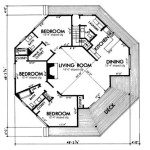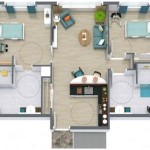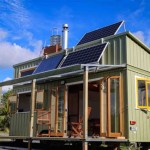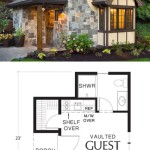Patio house floor plans are architectural designs that prioritize the inclusion of a patio or outdoor living space as an integral part of the home. These plans typically incorporate large glass doors or windows that create a seamless transition between the indoor and outdoor areas, fostering a connection between nature and living space.
One prominent example of a patio house floor plan is the California Ranch style. This architectural style, known for its open floor plans and expansive windows, often features a patio that extends off the living room or kitchen, creating a natural extension of the home into the outdoors. Such designs are popular in regions with favorable climates and provide homeowners with a versatile space for outdoor dining, entertaining, and relaxation.
In the following sections, we will delve into the key considerations and elements involved in designing patio house floor plans, exploring their advantages, and showcasing inspirational examples from around the world.
When designing patio house floor plans, several key considerations come into play, shaping the functionality and appeal of these outdoor-oriented homes.
- Indoor-outdoor flow
- Natural light and ventilation
- Privacy and shelter
- Outdoor kitchen and dining
- Fire pit or fireplace
- Water feature
- Landscaping and greenery
- Energy efficiency
- Zoning and regulations
- Personal lifestyle and needs
By carefully considering these factors, homeowners and architects can create patio house floor plans that enhance the connection between indoor and outdoor living, promoting relaxation, entertainment, and a harmonious relationship with nature.
Indoor-outdoor flow
Indoor-outdoor flow is a key consideration in patio house floor plans, aiming to create a seamless transition between the living spaces and the outdoor patio area. This integration allows for natural light and ventilation to permeate the home while also providing easy access to the outdoors for relaxation, dining, and entertainment.
- Expansive glass doors or windows
Large glass doors or windows are often incorporated into patio house floor plans to maximize the connection between indoor and outdoor spaces. These glazed openings allow for abundant natural light to flood the interior while also providing unobstructed views of the patio and garden. Additionally, they facilitate easy access to the outdoors, blurring the boundaries between the two areas.
- Open floor plans
Open floor plans are commonly employed in patio house designs to create a sense of spaciousness and fluidity. By minimizing walls and partitions, the living areas, dining spaces, and kitchen seamlessly flow into the outdoor patio, fostering a continuous and inviting environment for both indoor and outdoor living.
- Raised platforms or decks
Raised platforms or decks are another effective way to enhance indoor-outdoor flow in patio house floor plans. These elevated outdoor living spaces often adjoin the main living areas, providing a smooth transition from indoor to outdoor. They can be used for dining, lounging, or simply enjoying the views of the surrounding landscape.
- Covered patios
Covered patios extend the living space outdoors by providing a shaded and protected area from the elements. They allow homeowners to enjoy the outdoors in all seasons, regardless of rain or excessive sunlight. Covered patios can be furnished with comfortable seating, dining tables, and even outdoor kitchens, creating a versatile and inviting outdoor living room.
By carefully considering indoor-outdoor flow in patio house floor plans, architects and homeowners can create homes that embrace nature, promote a healthy lifestyle, and provide ample opportunities for relaxation and entertainment.
Natural light and ventilation
Natural light and ventilation are essential considerations in patio house floor plans, as they contribute to the overall well-being and comfort of the occupants. By incorporating design elements that maximize natural light and promote cross-ventilation, architects can create healthy and sustainable living environments.
- Large windows and glass doors
Large windows and glass doors allow ample natural light to flood the interior of the home, reducing the need for artificial . This not only creates a brighter and more inviting living space but also reduces energy consumption. Additionally, large glazed openings provide unobstructed views of the outdoors, further enhancing the connection between indoor and outdoor areas.
- Skylights
Skylights are another effective way to introduce natural light into patio house floor plans. These roof-mounted windows provide overhead lighting, which can help to brighten up darker areas of the home, such as hallways or interior rooms. Skylights can also be used to create dramatic architectural features and add a sense of spaciousness to the living space.
- Cross-ventilation
Cross-ventilation is a passive cooling technique that utilizes natural breezes to circulate air through a building. In patio house floor plans, cross-ventilation can be achieved by placing windows and doors on opposite sides of the home. This allows fresh air to flow through the living spaces, removing stale air and creating a more comfortable indoor environment. Cross-ventilation can also help to reduce the need for air conditioning, lowering energy costs and promoting sustainability.
- Courtyards and atriums
Courtyards and atriums are enclosed outdoor spaces that can be incorporated into patio house floor plans to provide natural light and ventilation. These internal courtyards or atriums bring the outdoors into the heart of the home, creating a central gathering space and a source of natural light for surrounding rooms. They can also be used to improve air circulation and promote cross-ventilation.
By carefully considering natural light and ventilation in patio house floor plans, architects and homeowners can create healthy, comfortable, and sustainable living environments that are bathed in natural light and fresh air.
Privacy and shelter
Privacy and shelter are important considerations in patio house floor plans, as they impact the overall comfort and security of the occupants. By incorporating design elements that provide privacy and shelter from the elements, architects can create outdoor living spaces that are both inviting and protected.
One way to enhance privacy in patio house floor plans is to use strategic landscaping. Tall hedges, trees, and shrubs can be planted around the perimeter of the patio to create a natural screen from neighboring properties or public view. Additionally, fences or walls can be installed to provide further privacy and define the boundaries of the outdoor space.
Shelter from the elements is another important aspect of privacy and comfort in patio house floor plans. Covered patios provide protection from rain, sun, and wind, allowing homeowners to enjoy their outdoor living spaces in all seasons. These covered areas can be extended with retractable awnings, pergolas, or shade sails, offering flexibility and control over the amount of sun exposure.
Incorporating outdoor curtains or screens into patio house floor plans can also enhance privacy and shelter. These movable elements can be used to create temporary enclosures, providing protection from wind, rain, or insects. They can also be used to section off different areas of the patio, creating more intimate or private spaces for relaxation or dining.
By carefully considering privacy and shelter in patio house floor plans, architects and homeowners can create outdoor living spaces that are both inviting and protected, allowing for year-round enjoyment and enhanced comfort.
Outdoor kitchen and dining
Outdoor kitchens and dining areas are increasingly popular features in patio house floor plans, allowing homeowners to extend their living and entertaining spaces into the outdoors. These outdoor cooking and dining areas provide a seamless transition between indoor and outdoor living, creating a versatile and inviting space for al fresco dining and entertaining.
Outdoor kitchens can range from simple setups with a grill and a few appliances to fully equipped kitchens with sinks, refrigerators, and dishwashers. The design of the outdoor kitchen should complement the overall style of the patio house and take into account the available space and budget. Built-in appliances and cabinetry can create a cohesive and modern look, while portable grills and appliances offer more flexibility and affordability.
The dining area in patio house floor plans should be carefully planned to accommodate the desired number of guests and provide comfortable seating. Outdoor dining tables and chairs should be durable and weather-resistant, and can be made from materials such as teak, aluminum, or wrought iron. Cushioned chairs and benches can add extra comfort, and umbrellas or shade sails can provide protection from the sun.
To further enhance the outdoor kitchen and dining experience, consider incorporating additional features such as a pizza oven, a wet bar, or a fire pit. These elements can create a more inviting and versatile outdoor living space, perfect for entertaining guests or simply relaxing with family and friends.
By carefully planning and designing the outdoor kitchen and dining area in patio house floor plans, homeowners can create a seamless extension of their living space, allowing them to enjoy the outdoors while cooking, dining, and entertaining in comfort and style.
Fire pit or fireplace
Fire pits and fireplaces are popular additions to patio house floor plans, as they provide warmth, ambiance, and a focal point for outdoor gatherings. These outdoor fire features can extend the usability of the patio area into the cooler months and create a cozy and inviting atmosphere for relaxation and entertainment.
- Warmth and ambiance
Fire pits and fireplaces provide a source of warmth on cool evenings, allowing homeowners to enjoy their outdoor living spaces even when the temperature drops. The flickering flames and radiant heat create a cozy and inviting atmosphere, perfect for gatherings with family and friends.
- Focal point
Fire pits and fireplaces often become the focal point of the patio area, drawing people together and creating a natural gathering space. They provide a central point for conversation, storytelling, and roasting marshmallows, fostering a sense of community and shared experiences.
- Extended use of outdoor space
By providing warmth and ambiance, fire pits and fireplaces extend the usability of the patio area into the cooler months. Homeowners can enjoy their outdoor living spaces for longer periods of the year, even in regions with colder climates.
- Aesthetic appeal
Fire pits and fireplaces add visual interest and aesthetic appeal to patio house floor plans. They can be constructed from a variety of materials, such as stone, brick, or metal, and can be customized to match the style of the home and outdoor dcor. Fire pits and fireplaces can also be used to create unique and dramatic architectural features, such as outdoor fireplaces built into walls or seating areas.
When incorporating a fire pit or fireplace into a patio house floor plan, it is important to consider factors such as safety, placement, and fuel source. Fire pits should be located a safe distance from any structures or flammable materials, and should be equipped with a spark screen to prevent embers from escaping. Fireplaces should be properly installed and vented to ensure safe operation. The choice of fuel source will depend on factors such as availability, cost, and personal preference.
Water feature
Water features add a touch of tranquility and visual interest to patio house floor plans. The gentle sound of flowing water can create a serene and relaxing atmosphere, while the reflective surface of a pond or pool can add depth and dimension to the outdoor space. Water features can range from small tabletop fountains to large koi ponds, and can be customized to complement the style of the home and patio.
One popular water feature for patio house floor plans is a pondless waterfall. This type of water feature combines the beauty of a waterfall with the practicality of a pondless design. Water is recirculated through a hidden reservoir, eliminating the need for a large body of standing water. Pondless waterfalls can be incorporated into retaining walls, planters, or other architectural elements, creating a visually stunning and space-saving water feature.
Another popular option for patio house floor plans is a reflecting pool. Reflecting pools are shallow bodies of water that create a mirror-like surface, reflecting the surrounding landscape and sky. They can be used to create a sense of spaciousness and add a touch of elegance to the outdoor space. Reflecting pools can be any shape or size, and can be customized with fountains, , or other water features.
For those who want to enjoy the benefits of a water feature without the maintenance of a pond or pool, a tabletop fountain is a great option. Tabletop fountains are self-contained units that can be placed on a table, countertop, or other surface. They are available in a wide range of styles and materials, and can be customized with different water flow patterns and . Tabletop fountains are a simple and effective way to add the soothing sounds of water to any patio space.
When incorporating a water feature into a patio house floor plan, it is important to consider factors such as size, placement, and maintenance. The size of the water feature should be proportionate to the size of the patio and the overall design of the outdoor space. The placement of the water feature should take into account factors such as visibility, access to electricity and water, and proximity to seating areas.
Landscaping and greenery
Landscaping and greenery play a vital role in enhancing the overall aesthetic appeal and functionality of patio house floor plans. Carefully planned and executed landscaping can create a seamless transition between the indoor and outdoor spaces, blurring the boundaries and bringing the beauty of nature into the home.
One key aspect of landscaping in patio house floor plans is the strategic placement of trees and shrubs. Trees provide shade and privacy, while shrubs can be used to create hedges, define spaces, and add color and texture to the landscape. When selecting plants for patio house floor plans, it is important to consider factors such as climate, soil conditions, and the amount of sunlight available. Native plants are often a good choice, as they are adapted to the local climate and require less maintenance.
Another important aspect of landscaping in patio house floor plans is the incorporation of hardscaping elements, such as patios, walkways, and retaining walls. These elements can help to define different areas of the outdoor space and provide structure and visual interest. Patios can be used for dining, entertaining, or simply relaxing, while walkways can lead guests through the landscape and connect different areas of the property. Retaining walls can be used to create raised planting beds, add privacy, or prevent erosion.
To further enhance the connection between indoor and outdoor spaces, consider incorporating vertical gardening into the patio house floor plan. Vertical gardens are a great way to add greenery to walls and fences, creating a living wall that can help to purify the air and provide a touch of nature to the outdoor space. Vertical gardens can be planted with a variety of plants, including herbs, flowers, and vegetables.
By carefully considering landscaping and greenery in patio house floor plans, homeowners can create beautiful and functional outdoor spaces that seamlessly blend with the surrounding landscape and provide a peaceful and inviting retreat.
Energy efficiency
Energy efficiency is an important consideration in patio house floor plans, as it can significantly reduce energy consumption and lower utility bills. By incorporating energy-efficient design strategies, homeowners can create comfortable and sustainable living spaces that minimize their environmental impact.
One key aspect of energy efficiency in patio house floor plans is the use of high-performance windows and doors. Energy-efficient windows and doors are designed to reduce heat loss in the winter and heat gain in the summer, resulting in lower energy consumption for heating and cooling. Look for windows and doors with low U-factors and high solar heat gain coefficients (SHGCs) to maximize energy efficiency.
Another important aspect of energy efficiency in patio house floor plans is the use of insulation. Insulation helps to reduce heat transfer between the indoors and outdoors, keeping the home warmer in the winter and cooler in the summer. Adequate insulation should be installed in the walls, roof, and floor of the patio house to minimize energy loss.
In addition to windows, doors, and insulation, there are other energy-efficient features that can be incorporated into patio house floor plans. These features include energy-efficient appliances, solar panels, and geothermal heating and cooling systems. By carefully considering energy efficiency in the design of patio house floor plans, homeowners can create sustainable and comfortable living spaces that reduce energy consumption and lower utility bills.
Incorporating energy-efficient design strategies into patio house floor plans not only benefits the environment but also provides financial savings for homeowners. By reducing energy consumption, homeowners can lower their utility bills and contribute to a more sustainable future.
Zoning and regulations
Zoning and regulations play a crucial role in determining the feasibility and design of patio house floor plans. Zoning laws are regulations that govern the use of land and buildings within a specific area. These laws are established by local governments and can vary significantly from one jurisdiction to another.
When designing a patio house floor plan, it is important to be aware of the zoning regulations that apply to the property. These regulations may specify the allowable uses for the land, the maximum height and size of buildings, and the required setbacks from property lines. It is essential to consult with local building authorities to ensure that the proposed patio house floor plan complies with all applicable zoning regulations.
In addition to zoning laws, there may be other regulations that apply to patio house floor plans. These regulations may include building codes, energy codes, and environmental regulations. Building codes establish minimum standards for the construction of buildings, including structural safety, fire safety, and accessibility. Energy codes regulate the energy efficiency of buildings, including the insulation, windows, and HVAC systems. Environmental regulations may restrict the use of certain materials or construction methods to protect the environment.
It is important to work closely with architects, builders, and local authorities to ensure that the patio house floor plan complies with all applicable zoning regulations and building codes. Failure to comply with these regulations can result in delays, fines, or even the inability to obtain a building permit.
By carefully considering zoning and regulations in the design of patio house floor plans, homeowners can avoid potential problems and ensure that their new home is built in accordance with all applicable laws and regulations.
Personal lifestyle and needs
Personal lifestyle and needs play a significant role in shaping the design of patio house floor plans. Factors such as family size, entertaining habits, and hobbies can influence the layout, size, and features of the outdoor living space. By carefully considering their personal lifestyle and needs, homeowners can create a patio house floor plan that is tailored to their unique requirements and provides a comfortable and enjoyable outdoor living experience.
- Family size and composition
The size and composition of the family will impact the design of the patio house floor plan. A family with young children may require a larger outdoor space with plenty of room for play and activities. Families with older children or teenagers may prefer a more sophisticated outdoor living space with dedicated areas for dining, entertaining, and relaxation. Additionally, the presence of pets or extended family members may also influence the size and design of the patio house floor plan.
- Entertaining habits
Homeowners who frequently entertain guests may want to consider a patio house floor plan with a large outdoor kitchen and dining area. This will allow them to comfortably accommodate guests and create a convivial atmosphere for parties and gatherings. Features such as a built-in grill, a wet bar, and a pizza oven can further enhance the entertaining experience.
- Hobbies and interests
Patio house floor plans can be customized to accommodate the hobbies and interests of the homeowners. For example, homeowners who enjoy gardening may want to incorporate raised planting beds or a greenhouse into their outdoor space. Those who enjoy swimming may want to consider adding a pool or spa to their patio area. Homeowners who are passionate about outdoor cooking may want to design an outdoor kitchen that is fully equipped with a variety of cooking appliances.
- Accessibility and safety
Patio house floor plans should be designed with accessibility and safety in mind, especially for families with young children or elderly members. Features such as wide walkways, ramps, and grab bars can help to ensure that everyone can safely and easily access and enjoy the outdoor living space. Additionally, the patio area should be well-lit and free of potential hazards, such as tripping hazards or sharp edges.
By carefully considering their personal lifestyle and needs, homeowners can create a patio house floor plan that is tailored to their unique requirements and provides a comfortable and enjoyable outdoor living experience. The outdoor space should be an extension of the home, reflecting the personality and interests of the homeowners and providing a space for relaxation, entertainment, and connection with nature.










Related Posts








